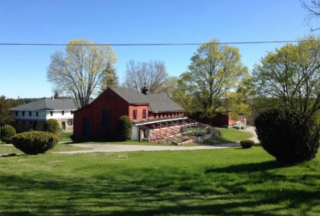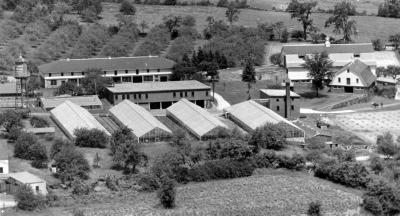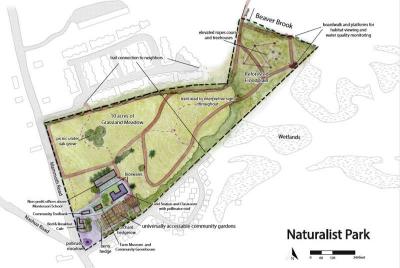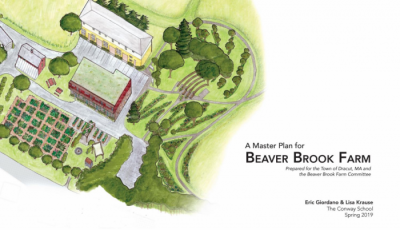CPA Helps to Redefine Historic Beaver Brook Farm in Dracut

This article was originally published in Lancaster Farming in May of 2019. Written by Guy Steucek. Reprinted by permission.
The Dracut public wanted Beaver Brook Farm and backed this desire with $2.8 million in 2015. Now, what will they do with the prize?
Beaver Brook Farm is one of the oldest farms in a region which was first permanently settled in 1669. The land and original 1736 farmhouse provide “eye candy” for those driving past on Mammoth Road and establish a sense of place for residents.
 The farm has been in the Richardson family since 1736 and has undergone change, expansion and contraction. When Justus C. Richardson took over the farm in 1905, a number of innovative techniques were adopted including irrigation, hothouses for year-round growing and development of new varieties. Blue Hubbard squash was a famed product which was distributed to markets in the Northeast. Innovation continued when George Richardson took over, including the development of a local airport on the farm.
The farm has been in the Richardson family since 1736 and has undergone change, expansion and contraction. When Justus C. Richardson took over the farm in 1905, a number of innovative techniques were adopted including irrigation, hothouses for year-round growing and development of new varieties. Blue Hubbard squash was a famed product which was distributed to markets in the Northeast. Innovation continued when George Richardson took over, including the development of a local airport on the farm.
In 1953, 21 acres of Beaver Brook Farm were donated to the town of Dracut for a high school complex. Most recently, the town of Dracut purchased the remaining 24 acres of Beaver Brook Farm using Community Preservation Act funds. Just prior to town meeting approval of the purchase, James Duggan, town manager, appointed members to the Beaver Brook Farm Committee to oversee reuse of the property. The committee met regularly for four years with little progress. Prior to a reuse plan, the town insurers didn’t like the risk of the ceramic-tile silo and milking barn, so they were demolished.
Elizabeth Ware, Dracut director of community development, encouraged help from the Conway School in Northampton. Lisa Krause and Eric Giordano, graduate students at the Conway School, took on the future of Beaver Brook Farm as a project.
 On May 3, Krause and Giordano held a public hearing to educate the public on the attributes of Beaver Brook Farm and to receive input from the public on how the property could be used. On May 23, they presented three plans to the Conway School students, faculty and outside reviewers for critique. Ware was the only Dracut representative present.
On May 3, Krause and Giordano held a public hearing to educate the public on the attributes of Beaver Brook Farm and to receive input from the public on how the property could be used. On May 23, they presented three plans to the Conway School students, faculty and outside reviewers for critique. Ware was the only Dracut representative present.
The comprehensive planning identified a number of important considerations. While large population centers are close, travel times to Beaver Brook Farm are relatively long, so potential visitors will be from Lowell and local communities. The Dracut senior center is within walking distance of Beaver Brook Farm.
The Dracut high school complex property joins the Beaver Brook Farm plot with a substantial bridge across Beaver Brook, thereby enhancing the prospects of educational opportunities for Beaver Brook Farm. The high school has a keen interest in the development of a cross country running trail on the site.
Views of open farmland was a top choice in a town-wide survey in the Open Space and Recreation Plan of Dracut. Residents were asked to rate the top three places or views. Farmland was 38%, Veterans Park 5% and the Town Hall 5%. Hiking trails was a top choice when asked what open space or recreational facilities were needed, being twice that of alternatives.
From 2010 to 2017, the Dracut senior population increased by 23% whereas the total population increased 6%. Moreover, Beaver Brook Farm is in the heart of the environmental justice zone in Dracut. Environmental justice zones are based on income, race, nationality and age. Rebuilding affordable housing on the site of the burned-out building at Beaver Brook Farm would address the town needs and be in compliance of CPA regulations. Community gardens would enhance community-building in the region, noted Krause.
 Krause and Giordano were cognizant that Dracut is currently reviewing their storm water management plan in compliance with EPA directives. The municipal separate storm water system permit has an educational component which could be implemented at Beaver Brook Farm with green infrastructure and water quality monitoring, noted Giordano.
Krause and Giordano were cognizant that Dracut is currently reviewing their storm water management plan in compliance with EPA directives. The municipal separate storm water system permit has an educational component which could be implemented at Beaver Brook Farm with green infrastructure and water quality monitoring, noted Giordano.
Nearly half of the Beaver Brook Farm is prime farmland and should be honored as such, said Krause.
The historic farmhouse, venerable squash barn and other remaining buildings can be built into plans with a variety of functions, depending upon the thrust of a plan, Krause said. Currently the town plan is to sell the farmhouse, but it could provide office space for agencies using the farm or could be refurbished as a café or bed and breakfast.
Currently, the town is negotiating with a private firm to establish a terraponics indoor growing facility in the squash barn. However, this facility could use any vacant industrial space in town and the squash barn use could be related to the prime agricultural soils on site, Krause said.
 Krause and Giordano developed three plans for the Beaver Brook Farm: A Naturalist Park, A Place for All, and Farmland Focus. All plans respond to the CPA criteria: preserve pastoral views from the road; provide different approaches for agriculture, educational opportunities and recreation; and to provide different approaches for addressing storm water and increasing habitat.
Krause and Giordano developed three plans for the Beaver Brook Farm: A Naturalist Park, A Place for All, and Farmland Focus. All plans respond to the CPA criteria: preserve pastoral views from the road; provide different approaches for agriculture, educational opportunities and recreation; and to provide different approaches for addressing storm water and increasing habitat.
After their presentation, the referees complemented Krause and Giordano on the quality of their work. They all were concerned with the amount of administrative and financial effort that would be required for the full implementation of the more complex plans. A Naturalist Park would take the least amount of administrative and financial struggle and would soften the landscape.
Reconstructing the historic water tower as a cell tower would give Beaver Brook Farm an iconic signature and generated income, Giordano said.
Not only have Krause and Giordano provided the Beaver Brook Farm committee with several alternatives for Beaver Brook Farm, they have based these plans on comprehensive study of the Dracut community and have incubated and tested their ideas with the constituents of the Conway School.

